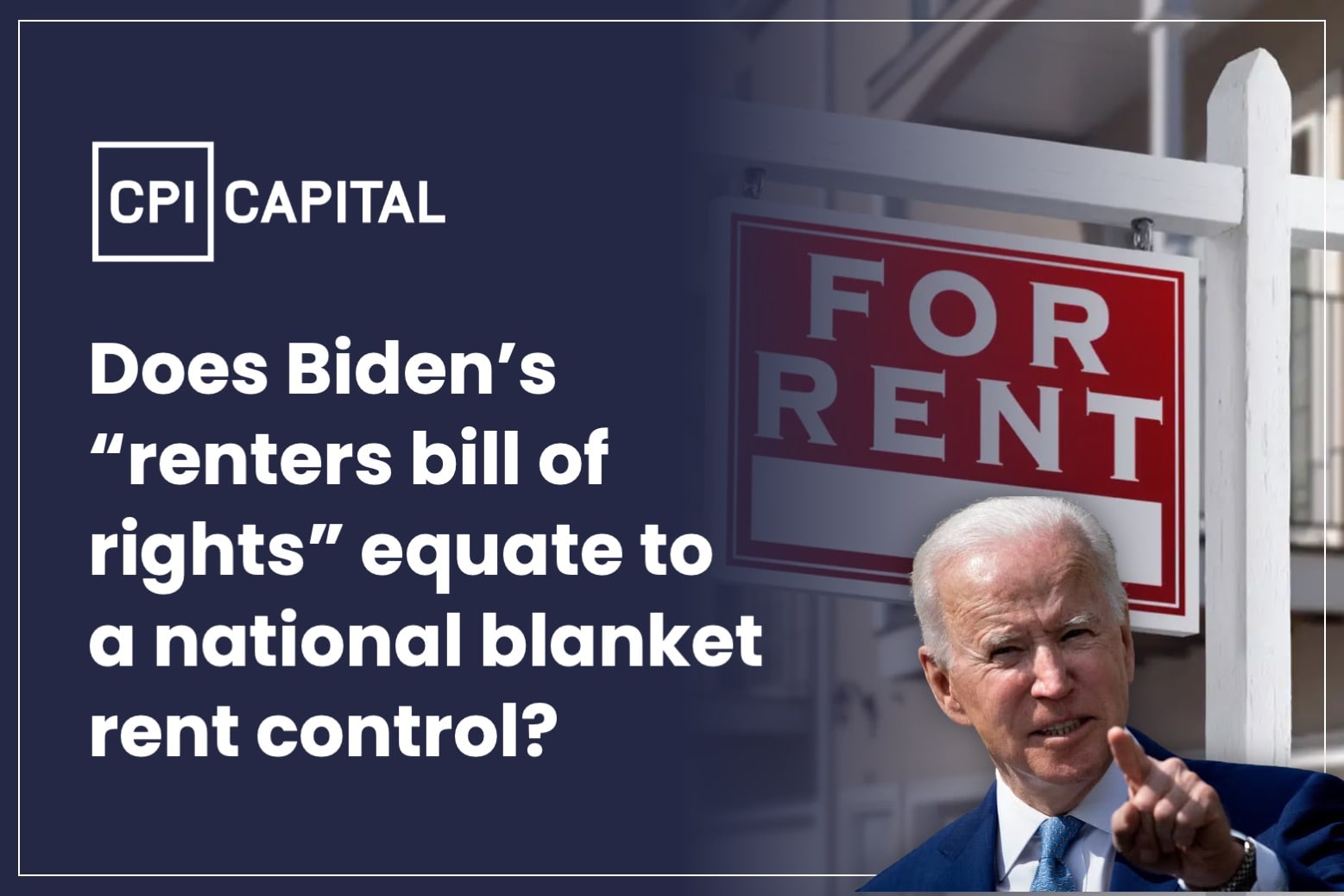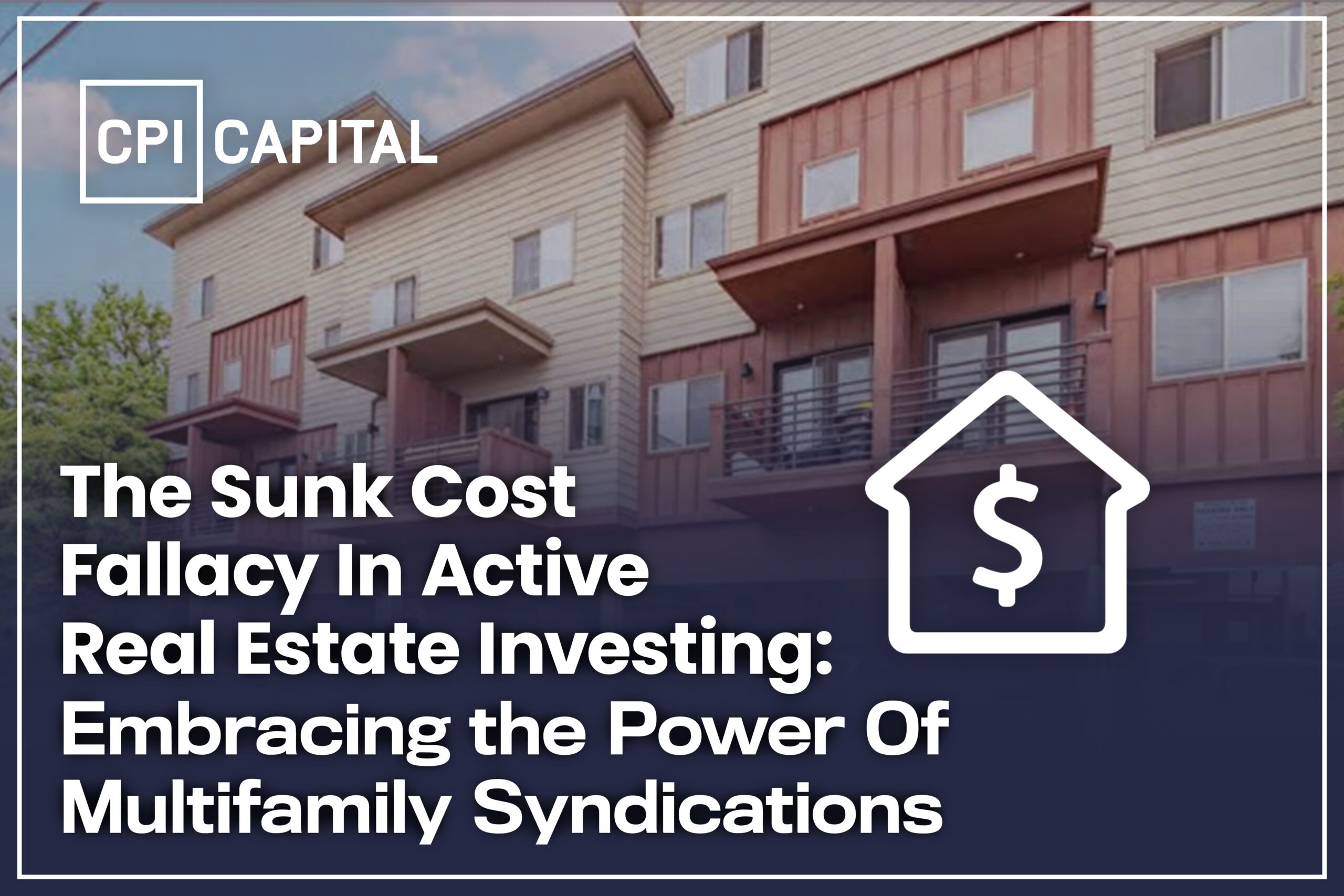
Dear valued existing investors and future investors,
It’s time again CPI Capital’s weekly news briefing about multifamily related issues. This regular update contains a mixture of updates, commentary and informative related articles relating to the lucrative world of passive real estate investment
If you are already one of our subscribers, thank you. If you are not, take the chance to sign up to our newsletter> now and keep right up to date with all you need to know about multifamily or BTR-SFR syndicated real estate investment!
Well, this week, back in the news again recently is the highly contentious topic of rent control.
As we all know, the price of any article or commodity is a function of supply and demand. The market rental of a multifamily or BTR-SFR unit should, therefore, be determined by free market forces.
However, notwithstanding basic economics, there are certain situations where rentals are artificially controlled by either the provision of subsidies or a limitation on such rentals; ie renting certain types of accommodation in the US.
Decades ago, a number of US States determined that they would impose limits on the amount of rental increases which could be imposed on existing tenants when they came to renew their leases; this series of laws became known as “rent control”and were designed to keep living costs affordable for lower-income residents and limit rentals accordingly.
The issue of rent control has always been considered controversial but, in recent years, and more so with a Democrat administration, the subject of rent control has been revived.
What is rent control?
Rent control is essentially a government programme which imposes limits on the amount that a landlord can require for leasing a property or renewing a lease. Such laws are usually enacted by local municipalities.
Currently, rent control legislation is not overly widespread in the US, tending to be confined to areas where potential demand for rental accommodation greatly exceeds supply. Only around 182 municipalities have rent control regulations, in the New York, New Jersey, California, Maryland, or Washington DC areas. Only Oregon has state-wide rent control laws and approximately 30 states have laws which forbid rent control–and, therefore, considered.more landlord friendly.
Before we discuss how rent control works, have you read our top 10 forecasts for the US economy and CRE in 2023
How rent control works
Rent control laws in the US date back to the 1920s and were usually rent freezes with landlords not allowed to raise rent at all. Such laws proved unworkable and faded away until the 1970s when the term used was “rent stabilisation” and the laws were more moderate.
Even though older rent control programmes have been in the process of being phased out for decades, yet there are some renters who have been in the same occupancy since 1974 or live in buildings which were constructed before 1947.
Rent stabilisation programmes provide that rentals can only be increased every 1-2 years, and then by an allowable percentage increase set by a Rent Guidelines Board.
Passive investors: do you know how to vet a real estate investment group before making an investment?
During the pandemic, the government also intervened in the housing market when, in September 2020, the Centre for Disease Control and Prevention (CDC) introduced a moratorium on evictions. This lasted initially until June 2021, then July 31st, and finally until early October 2021. This moratorium generated multiple lawsuits across the country, the New Civil Liberties Alliance (NCLA) arguing that the eviction moratorium exceeded the constitutional and statutory limits of CDC’s authority.
But, as the pandemic fades into the past, the US government wants, once again, to intervene in the housing rental market.
What is the Administration doing?
Hoping to promote a fairer rental market and, in response to statistics showing that rentals for accommodation rose some 17% year-on-year to February 2022, the Biden-Harris Administration is planning a “Blueprint for a Renters Bill of Rights”.
Download and read our FREE e-book: 25 Fundamental questions to ask a Syndication Sponsor before making your investment
A number of well-known US agencies have also been tasked with action:
- The Federal Housing Finance Agency (FHFA) is considering limits on rent increases and other renter protections;
- The Federal Trade Commission (FTC) and the Consumer Financial Protection Bureau (CFPB) will identify unfair practices that prevent tenants from accessing or maintaining housing;
- The US Department of Housing and Urban Development will issue rules requiring owners of rental assistance properties and public housing authorities to give 30 days’ notice to terminate a lease for non-payment of rent.
The Administration is also calling on state and local governments to limit rental increases to 5% in respect of subsidised affordable housing.
Under the proposed Blueprint, tenants are likely to be afforded the following:
- Access to quality affordable housing;
- Protection and improved education about renter rights;
- Fair and clear leases;
- Education about eviction prevention and relief
After the Bill of Rights, is national rent control next?
In advance of the aforementioned actions, several States had approved limits on rent increases and the introduction of rent control to combat the housing affordability crisis. However, there are some lawmakers who believe that solutions are insufficient, and have made a written request to President Biden to require the FTC to “issue new regulation defining excessive rent increases as unfairly affecting commerce and enforcing action against unfair rent gouging practices.”
To many, taking even further action on rentals may be one-step away from a form of rent control on a national basis.<
But is rent control counterproductive?
Interestingly, public opinion usually supports some form of rent control in a crisis situation, even though numerous studies have revealed that the long-term effects of rent control have a negative effect on tenants and their access to affordable housing. For example, rent caps in San Francisco led landlords to remove inventory from the stock, eventually causing undue increases in market rents as demand was maintained.
Rent control also disincentivises the construction of new affordable rental housing and discourages rehabilitation and maintenance of existing properties; thereby affecting cap rates and values. Further, rent control can cause the misallocation of accommodation to renters where, for example, families are less likely to downsize when they need smaller space, indirectly constraining the supply of larger units.
There’s no doubt an affordability housing crisis is real
In 2023, around 565,200 new rental units are forecast to become available across the country, the highest figure in decades (although some of this stock is due to construction which stalled during the pandemic.
However, rentals are up 8.4% in the last year and, even with a greater supply of apartments, rents are expected to stay elevated. So there is, arguably, a compelling case for rent control as the impact of scarce affordable housing on low-income Americans could be severe if the federal government doesn’t intervene.
CPI Capitalis well aware of the issues related to affordability of housing and as, with many other issues, it’s a question of finding the right balance. Often undue government intervention in the (free) economy helps certain groups over the short term but damages the longer-term prospects for others such as real estate investors, developers and landlords.
We believe that one primary issue with rent control as a short-term solution is that it can be difficult to remove, especially if it has been in-place for a prolonged period. Furthermore, in the future when rent controls are removed, a durable solution to prevent tenants in rent-controlled buildings from having to pay a sudden and drastic increase in rent as rents adjust to market levels, will need to be found.
CPI Capital along with others such as The National Multifamily Housing Council, believes that financial support to developers of affordable housing is more likely to have the desired effect of providing safe, affordable housing to low-income people.
Importantly, there is a need to keep real estate developers “developing” to meet the ongoing demand for multifamily and BTR-SFR housing across the nation! And long-term rent control will not do this….
Yours sincerely,
August Biniaz
CIO, Co-Founder CPI Capital

Ready to build true wealth for your family?
It all starts with passive income. Apply to join the CPI Capital Investor Club.
Search
Recommended

What is the Correlation Between Bond Yields and Real Estate Cap Rates?
Dear valued existing investors and future investors, Welcome to CPI Capital's regular news...

The Sunk Cost Fallacy In Active Real Estate Investing: Embracing The Power of Multifamily Syndications
Dear valued existing investors and future investors, Welcome to this week's CPI Capital's news...

Key Metrics Every Multifamily Investor Needs to Know
Dear valued existing investors and future investors, Welcome once again to this week’s CPI...


